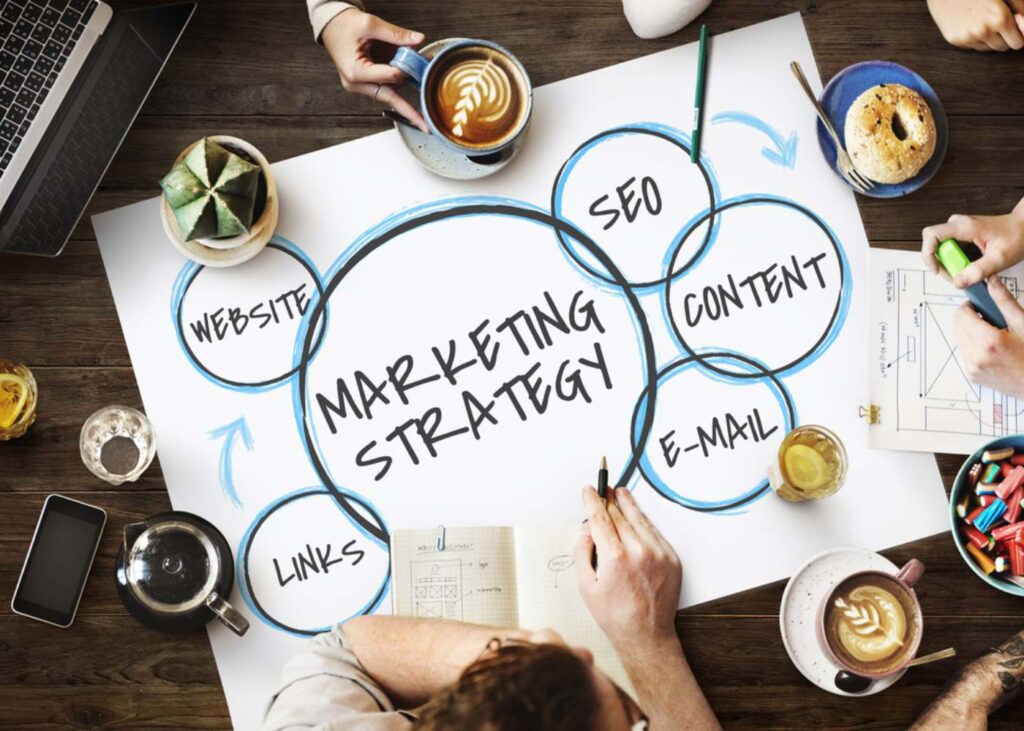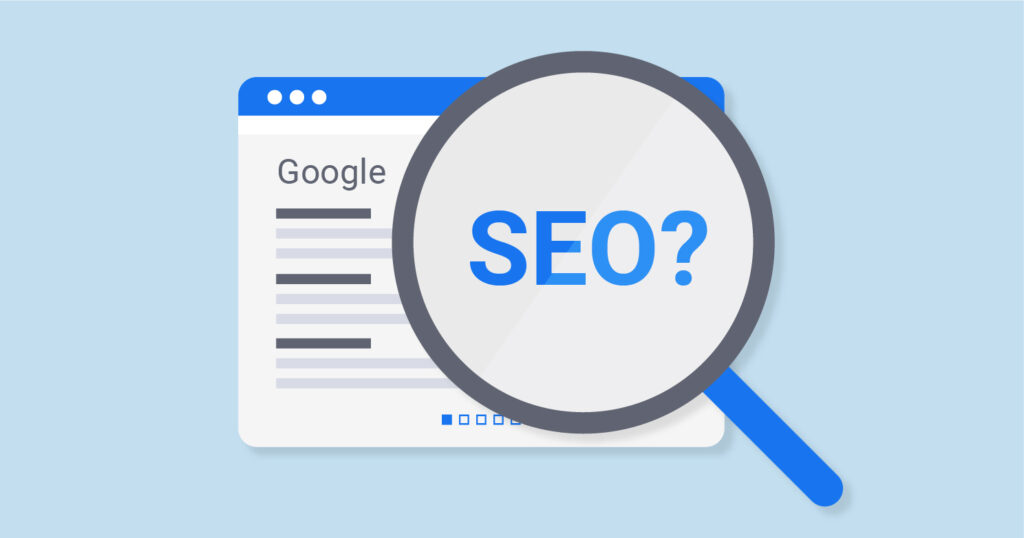
Are you an entrepreneur who’s just starting? Or are you a founder of a startup and about to plan how to scale?
Or perhaps, you work in performance marketing and handle accounts for small businesses?
Well, being any of these, you know that gaining traction in the early stages is undoubtedly a huge challenge.
Moreover, small businesses hold a special place in the global economy, driving innovation, creating jobs, and meeting the unique needs of local communities and market niches. Yet, competing with large corporations and establishing a solid market presence can be a daunting task.
That’s where marketing comes into play. With smart and creative strategies, small businesses can achieve significant success and growth, winning the attention and loyalty of their target customers. And that’s exactly what we’re going to explore in this comprehensive post.
I want to share with you my insights and opinion on 9 effective, tested, and proven marketing strategies that can drive the success of a small business.
From content marketing to SEO, from strong social media presence to loyalty programs, you’ll discover a variety of tactics that can help you achieve your business goals.
And to start, there’s nothing better than thinking and planning an organic strategy, right?
1) Personalized Content Marketing

You’re aware of the importance of a brand or business providing relevant and valuable content to its target audience, taking into account their specific needs, interests, and behaviors. You know this because at some point you are part of the target audience of some company.
Therefore, you know how good it is to follow a newsletter that provides relevant information for your life. Or even a YouTube channel that produces content that helps you progress in life, whether personally or professionally.
And with that, you know that the better and more qualified the content is, the stronger your relationship with that brand or company will be.
So why not create relevant content for your own business?
Creating personalized content brings several benefits to the business, such as:
- Low money invested;
- Chance to test without spending;
- Creation of truly qualified audiences;
- Loyal customers to your business;
- Ease of becoming an authority in your niche.
Creating relevant and valuable content that solves the problems of a specific audience, whether through blog posts, long videos, short videos, rich materials, or even infographics and spreadsheets, is still undoubtedly one of the main strategies to scale any business in any niche, especially for small businesses.
However, what I see here is the immediate need for results. Often these small businesses don’t have business plans for 2, 3, or 5 years from now. Just for that specific year, and therefore, some long-term actions are not a priority for these businesses.
And in my opinion, it’s a pity. Because there’s no secret here, really. What you plant today, you will harvest later. And if you “planted” quality content, you will “harvest” qualified customers.
2) Social Media Presence
Next, still following the strategy of spending little money at the beginning, nothing better than having a presence on the main social media platforms, especially on the platforms where you know your lead/customer is.
A strong presence on social media is essential for building relationships with customers, expanding your brand, promoting your products or services, and driving overall business growth.
It’s no longer a differentiator to be present on social media. Nowadays, it’s more than mandatory.
Often, Instagram or TikTok, for example, are being used as a search engine by leads/customers to see the credibility of a brand or business. Therefore, social media has become the main gateway for new customers. It’s indeed the digital portfolio of a business, and we can no longer underestimate its power.
Make sure to have a presence on social media by following these steps:
- Platform Selection:
It’s important to identify the social media platforms where your target audience is present. This may include Facebook, Instagram, Twitter, LinkedIn, TikTok, and other industry-specific platforms.
- Engaging Content:
To succeed on social media, as mentioned above, it’s essential to create engaging and relevant content that resonates with your audience. This may include regular posts, authentic stories, captivating videos, and user-generated content.
- Community Engagement:
Effective social media presence involves more than just posting content. You should also actively engage with your community by responding to comments, and messages, and sharing user-generated content. Perhaps this topic can be the differentiator for your business, as many small businesses fail to engage with their audience.
- Data Analysis:
Finally, it’s essential to track and analyze the performance of your activities on social media. This includes metrics such as reach, engagement, impressions, clicks, and even conversions. Based on these insights, you can adjust your strategy and optimize your return on investment in the future for the broader strategies of your business.
3) Segmented Email Marketing

Another way to spend little and deliver a lot of value to the lead/customer.
Segmented email marketing is a powerful strategy for reaching customers with relevant and personalized messages.
Moreover, if you know how to plan an “email drip campaign” without being too intrusive, with several emails during the week, and if you also know the right day and time to send the right content, well, then I guarantee you that your company’s email marketing will be one of the main acquisition channels for your business.
Once you have segmented your email list, it’s important to personalize the content of your campaigns to meet the specific needs and interests of each segment. This may include personalizing the email subject line, email body content, and promotional offers.
For example, if one of your email lists is of the audience that downloaded your 2024 marketing trends infographic, well, you know that the interests of this audience are related to marketing, perhaps innovation, and business strategies. Therefore, make sure to send your emails delivering content related to these topics.
With this, gradually your lead will take a liking to your newsletter, and this will facilitate conversion or even recommending your business to someone.
One cool thing about email marketing campaigns is the ability to automate the entire content process and flow. This allows you to send relevant messages at the right time, based on behavioral triggers such as birthdays, sign-up anniversaries, purchase behavior, and previous interactions with your emails.
And finally, Email Marketing, in my opinion, is the best place to test actions. This involves testing different elements such as subject lines, headlines, calls to action, offers, upsells, and email layouts as a whole, to identify what resonates best with your audience.
4) Localized SEO

When we talk about Localized SEO, it’s not just about using terms and keywords related to your business. It’s more than that.
It’s about using those words with geolocated terms, which allows you to differentiate yourself from competitors, have a lower investment in actions, and attract local customers more easily.
Think of the board game War. In War, you need to conquer territories gradually. Make alliances, infiltrate slowly into other regions, and with all care and caution, gradually dominate the entire territory of the map.
With Localized SEO, it’s practically the same thing.
Here in Brazil, for example, in almost every market niche I’ve worked in, we know that the states in the Southern region of the country have the lowest conversion costs. Additionally, we know that the Southeast region is where Brazil’s main companies and businesses are concentrated. It is in the Southeast that we have cities like São Paulo, Rio de Janeiro, Belo Horizonte, Vitória do Espírito Santo, and so on, and therefore, it is the hub of the Brazilian economy.
With this knowledge, for example, we know where we can “attack” first, depending on high demand, competition, and company investments.
And as a small business, we must keep this in mind since we will be competing for attention and market share with big players.
But Localized SEO also works for neighborhoods, countries, continents, etc. You have to know where it makes the most sense to start your “infiltration”.
Furthermore, building backlinks from local websites and business directories is essential for Localized SEO. This helps increase your site’s authority in local search results and shows Google that your company is relevant to your area.
Don’t forget to focus on Mobile Searches. With more people conducting local searches on mobile devices, it’s essential to ensure that your site is optimized for mobile devices. This includes having a responsive design, fast loading times, and easy-to-find contact information.
5) Strategic Partnerships
Strategic partnerships are collaborations between companies aimed at achieving common goals, such as increasing brand visibility, expanding market reach, or launching joint products. These “companies” can be individuals, such as influencers, podcast hosts, YouTube channel owners, specific bloggers in your area, and so on. Here are some details on how to think about and actualize strategic partnerships:
- Identifying Suitable Partners:
The first step in establishing strategic partnerships is to identify companies or organizations that share similar values, have complementary target audiences, or offer products/services that align with yours. This can include companies in the same industry, suppliers, influencers, or non-profit organizations.
- Shared Value Proposition:
A successful strategic partnership is one in which both parties benefit mutually. When developing a shared value proposition, it’s important to highlight the benefits that the partnership will bring to both companies, such as access to new customers, revenue growth opportunities, or sharing of resources and knowledge.
- Marketing Collaborations:
Strategic partnerships offer a unique opportunity to collaborate on joint marketing campaigns. This can include co-hosting events, sharing content on blogs or social media, creating exclusive promotional offers, and participating in affiliate programs.
- Product/Service Development:
Another form of strategic partnership is collaborating on the development of innovative products or services that meet the needs of both companies’ customers. This can result in co-branded products or integrated solutions that add value to both brands’ customers.
- Expanding Network Connections:
One of the main advantages of strategic partnerships is the opportunity to expand your network of contacts and access new business opportunities. As mentioned in the Email Marketing topic, by collaborating with partner companies, you can connect with a broader customer base/list and open doors to new growth opportunities.
- Results Evaluation:
Finally, it’s important to regularly evaluate the results of strategic partnerships and make adjustments as necessary. This may include tracking key metrics such as sales impact, brand awareness increase, or customer satisfaction to ensure that the partnership remains mutually beneficial in the long term.
6) Webinars, Workshops, and Online Courses

So far, all the topics covered here have involved little or no monetary investment. And to be honest, you don’t need to invest your money either.
It’s more a matter of investing time, and doing so intelligently.
But Webinars, Workshops, Masterclasses, and Online Courses (free ones) are excellent ways to stand out in your market, establish authority for your brand, create recognition of your product or service with your audience, and above all, a great way to build a healthy relationship with your future customer.
Webinars, for example, are an excellent way to provide valuable and interactive content that demonstrates your expertise in a particular subject. Moreover, webinars allow real-time interactions with participants, enabling you to answer questions and address doubts directly.
Workshops, on the other hand, are practical and intensive events that provide participants with the opportunity to learn specific skills and apply concepts in a collaborative learning environment. They are usually more hands-on than webinars, involving practical exercises, case studies, and group discussions.
All these formats offer a range of benefits, including global reach, flexibility of schedule, cost-effectiveness, and the ability to create meaningful connections with the audience. Additionally, they allow you to showcase your expertise, build authority in your field, and generate qualified leads for your business.
7) Strategic Remarketing
Strategic remarketing is a powerful technique in the arsenal of a digital performance specialist and sponsored campaigns. It allows reaching users who have already interacted with your website or products, keeping your brand top-of-mind and encouraging further actions.
Moreover, for small businesses that may have a limited budget for running campaigns, remarketing to the audience that their actions have reached and engaged can be a strategy with excellent conversions and low cost.
By segmenting users based on their previous behavior and providing highly relevant and persuasive messages, you can maximize the impact of your campaigns and achieve your marketing goals more effectively.
Here are some tactics to use when creating your remarketing campaign:
- Customized Targets:
Strategic remarketing allows you to segment users based on their previous behavior, such as visiting specific pages on your website, adding products to the shopping cart, or abandoning the checkout process. This allows for more precise customization of your campaigns and messages.
- Persuasive Messaging:
Based on user behavior, you can create highly relevant and persuasive messages to encourage them to return and complete an action. This can include special offers, reminders of items left in the cart, customer testimonials, or additional information about products or services.
- Expanding the Sales Funnel:
Remarketing can be used at various stages of the sales funnel to achieve different objectives. For example, you can target users who are at the top of the funnel with educational content, while directing those closer to conversion with promotional offers.
- Cross-Selling and Up-Selling:
In addition to recovering lost users, strategic remarketing can be used to drive additional sales. For example, you can target customers who have already made a purchase with complementary products or upgrades to encourage additional purchases.
- Testing and Optimization:
Like any digital marketing campaign, it’s important to test different approaches and continuously optimize your remarketing strategies. This can include A/B testing of different messages, offers, and segmentations to identify what resonates best with your audience, validating an idea more quickly than with organic actions.
8) Loyalty and Referral Programs

Loyalty and referral programs are essential strategies for promoting customer engagement, encouraging brand loyalty, and driving business growth, all in a practical and cost-effective manner, especially for SMBs.
Loyalty programs reward customers for repeat purchases and ongoing engagement with the brand. This can include rewards such as discounts, accumulated points, early access to exclusive sales, giveaways, or VIP benefits.
Additionally, Referral programs incentivize existing customers to recommend the brand to their friends, family, and professional contacts. This can be done through rewards such as discounts, store credits, giveaways, or even cash.
Therefore, all these actions, if well packaged and with added value for the customer, have the potential to be an exponentially effective result for an SMB, regardless of its niche.
Both Loyalty and Referral programs can be integrated into your existing digital marketing strategies. This includes email marketing campaigns, paid advertising, social media, and relevant website content, which highlight the benefits of the programs and encourage participation.
Like any digital marketing strategy, it’s important to continuously analyze and optimize your loyalty and referral programs. This includes monitoring key metrics such as enrollment rate, conversion rate, average order value, and number of referrals generated, and making adjustments as needed to improve performance.
In summary, from my experience, Loyalty and Referral programs are valuable strategies for building lasting relationships with customers, encouraging brand loyalty, and generating new business through recommendations. By offering attractive rewards, integrating programs with your digital marketing strategies, and continuously analyzing performance, you can drive the success of your loyalty and referral programs and achieve your business goals more effectively.
9) Exceptional Customer Service
And to wrap up The 9 Effective Marketing Strategies for Small Businesses, exceptional customer service is an essential part of any digital marketing strategy and sponsored campaigns.
Customer service goes beyond problem-solving; it’s about providing a positive and memorable experience at every touchpoint with the brand. This includes from the initial interaction with the customer to post-purchase and ongoing support.
In a highly competitive digital world, the customer experience is a crucial competitive differentiator. Satisfied customers not only return for future purchases but can also become brand advocates, sharing positive experiences with friends and family and through social media.
Moreover, clear and effective communication is fundamental for exceptional customer service. This includes promptly responding to customer inquiries, providing detailed information about products or services, and keeping customers informed about the status of their orders or support requests. Investing in automation tools and training your team to handle inquiries efficiently can significantly enhance the customer experience.
But don’t forget to personalize your service, so it doesn’t become generic or even robotic.
Personalizing customer service based on the individual needs and preferences of customers is essential for creating emotional connections and building long-term relationships. Personalization can include product recommendations based on the customer’s purchase history, personalized follow-up messages after a support interaction, and exclusive offers for loyal customers. These approaches show customers that they are valued and their individual needs are taken into consideration.
In conclusion, if your business is considered an SMB, you need to differentiate yourself from other companies. And exceptional customer service is an essential part of any digital marketing strategy for SMBs. By providing a positive and memorable experience, communicating effectively, personalizing service based on the individual needs of customers, and seeking feedback for continuous improvements, you can build long-term relationships with customers and drive the success of your online business.
Conclusion
In conclusion, effective marketing strategies for small businesses are essential for achieving success in a highly competitive market. I confess that by adopting smart, customer-centric approaches, particularly with specific campaigns, the right message at the right time, and personalized connection with an audience, companies can increase their visibility, expand their customer base, and stay ahead of competitors, driving business growth more effectively.
From the strategic use of social media to the implementation of loyalty programs, each strategy has the potential to generate tangible results when executed with care and diligence.
And don’t forget, there’s no one-size-fits-all approach that works for every business. It’s crucial to experiment, measure, and continuously adjust strategies based on results and customer feedback.
With perseverance, creativity, and a continued commitment to excellence, small businesses can make the most of their marketing initiatives and achieve sustainable long-term success.
Now, tell me, what are your strategies for effective marketing in an SMB?
Feel free to give me feedback and also share your stories with me. I’ll be very happy to receive your message.
Don’t forget to subscribe to my newsletter here on Medium to receive exclusive content on performance, paid media, productivity, creativity, marketing as a whole, and some geeky stuff.
Thank you for reading this far. See you next time!




